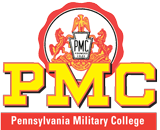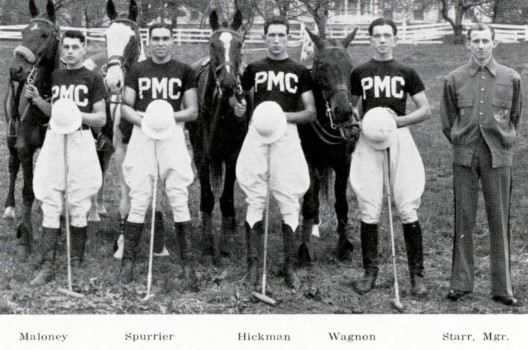 The 1939-1940 polo season was, perhaps, one of the greatest for polo at PMC. Under the guidance of Coach Carl Schaubel, ’30, considered at the time to be the best polo coach in the country, the team of Jim Spurrier ‘40, Emery Hickman ‘40 and “Bud” Maloney ‘41 excelled. Jim Spurrier was the sparkplug of the team. Bud Maloney formed the spearhead on attack, and Emory Hickman constantly retrieved the ball, feeding it to Spurrier and Maloney. Following the completion of a successful regular season, the PMC team once again played in the Intercollegiate Polo Tournament. They beat Harvard and West Point, but were defeated by Princeton in the Championship game. After graduation, these men, along with William Dudley ’42, a sophomore and another member of the polo team, were again teamed together in the 1st Cavalry Division. Three of these polo players distinguished themselves in action and earned Silver Star Medals for their leadership and heroism.
The 1939-1940 polo season was, perhaps, one of the greatest for polo at PMC. Under the guidance of Coach Carl Schaubel, ’30, considered at the time to be the best polo coach in the country, the team of Jim Spurrier ‘40, Emery Hickman ‘40 and “Bud” Maloney ‘41 excelled. Jim Spurrier was the sparkplug of the team. Bud Maloney formed the spearhead on attack, and Emory Hickman constantly retrieved the ball, feeding it to Spurrier and Maloney. Following the completion of a successful regular season, the PMC team once again played in the Intercollegiate Polo Tournament. They beat Harvard and West Point, but were defeated by Princeton in the Championship game. After graduation, these men, along with William Dudley ’42, a sophomore and another member of the polo team, were again teamed together in the 1st Cavalry Division. Three of these polo players distinguished themselves in action and earned Silver Star Medals for their leadership and heroism.
After months of “island hopping” through the Japanese held island chain known as “the Admiralties”, the 1st Cavalry 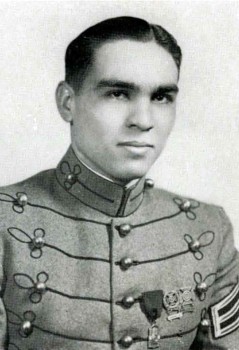 Division invaded the Philippine Island of Leyte in October 1944. On November 30th, B Troop, under the command of CPT James R. Spurrier, was ordered to open the only available supply route by attacking a strongly entrenched force. To accomplish this, Spurrier was forced to cut his own trail through a densely wooded jungle over rugged mountain terrain. As darkness fell, there was the added danger of his troops becoming lost. Spurrier demonstrated initiative and courage leading his men to a point from which an attack could be made at first light. During the night, he gathered reinforcements to his command with men returning from the hospital and others carrying rations. As the sun rose the next day, Spurrier launched a coordinated attack. After 12 hours of hand-to-hand combat led by Spurrier, the supply route was reopened and an estimated 218 Japanese troops had been killed.
Division invaded the Philippine Island of Leyte in October 1944. On November 30th, B Troop, under the command of CPT James R. Spurrier, was ordered to open the only available supply route by attacking a strongly entrenched force. To accomplish this, Spurrier was forced to cut his own trail through a densely wooded jungle over rugged mountain terrain. As darkness fell, there was the added danger of his troops becoming lost. Spurrier demonstrated initiative and courage leading his men to a point from which an attack could be made at first light. During the night, he gathered reinforcements to his command with men returning from the hospital and others carrying rations. As the sun rose the next day, Spurrier launched a coordinated attack. After 12 hours of hand-to-hand combat led by Spurrier, the supply route was reopened and an estimated 218 Japanese troops had been killed.
In January 1945, Luzon was invaded and General MacArthur issued the order “Go to Manila!” to liberate prisoners held by the Japanese and take the Malacañan Palace, the White House of the Philippines. Detached from the famous “flying column” and ordered to seize and hold the 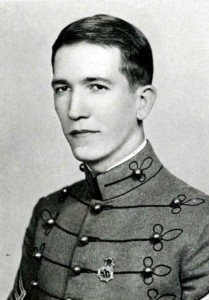 Palace, F Troop, commanded by CPT Emery M. Hickman, began the race towards Manila. To reach the objective, the squadron swept through the maze of unfamiliar streets and quickly overran the Japanese that were preparing to destroy the Palace. Hickey then organized the defense of the compound so well that when the Japanese tried to re-enter the grounds during the night they were stopped while taking many casualties. The next day, the Japanese began a murderous artillery bombardment of the Palace from across the Pasig River. Without regard for his personal safety Hickman courageously directed the fire of F Troop ordnance, observed the effects of the fire, and saw that all casualties received care.
Palace, F Troop, commanded by CPT Emery M. Hickman, began the race towards Manila. To reach the objective, the squadron swept through the maze of unfamiliar streets and quickly overran the Japanese that were preparing to destroy the Palace. Hickey then organized the defense of the compound so well that when the Japanese tried to re-enter the grounds during the night they were stopped while taking many casualties. The next day, the Japanese began a murderous artillery bombardment of the Palace from across the Pasig River. Without regard for his personal safety Hickman courageously directed the fire of F Troop ordnance, observed the effects of the fire, and saw that all casualties received care.
As the 8th Cavalry Regiment began its push southward of Manila, Japanese resistance blocked its progress. Troop E, commanded by CPT William Dudley, was given the 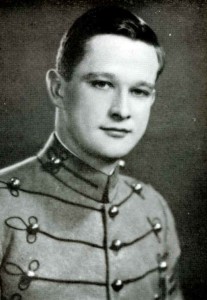 assignment to clear the area, starting with Gilmore Street. On Gilmore, a determined and tenacious Japanese force, consisting of machine guns and sniper fire, defended the area. Dudley was continually in the lead and exposed to the withering enemy fire. Throughout the daylong battle, Dudley remained in the forefront of the Troop reassuring his men and exploiting every gain before the enemy could reorganize. His leadership, personal courage, and heroism were directly responsible for the success of his and the regiment’s mission.
assignment to clear the area, starting with Gilmore Street. On Gilmore, a determined and tenacious Japanese force, consisting of machine guns and sniper fire, defended the area. Dudley was continually in the lead and exposed to the withering enemy fire. Throughout the daylong battle, Dudley remained in the forefront of the Troop reassuring his men and exploiting every gain before the enemy could reorganize. His leadership, personal courage, and heroism were directly responsible for the success of his and the regiment’s mission.
